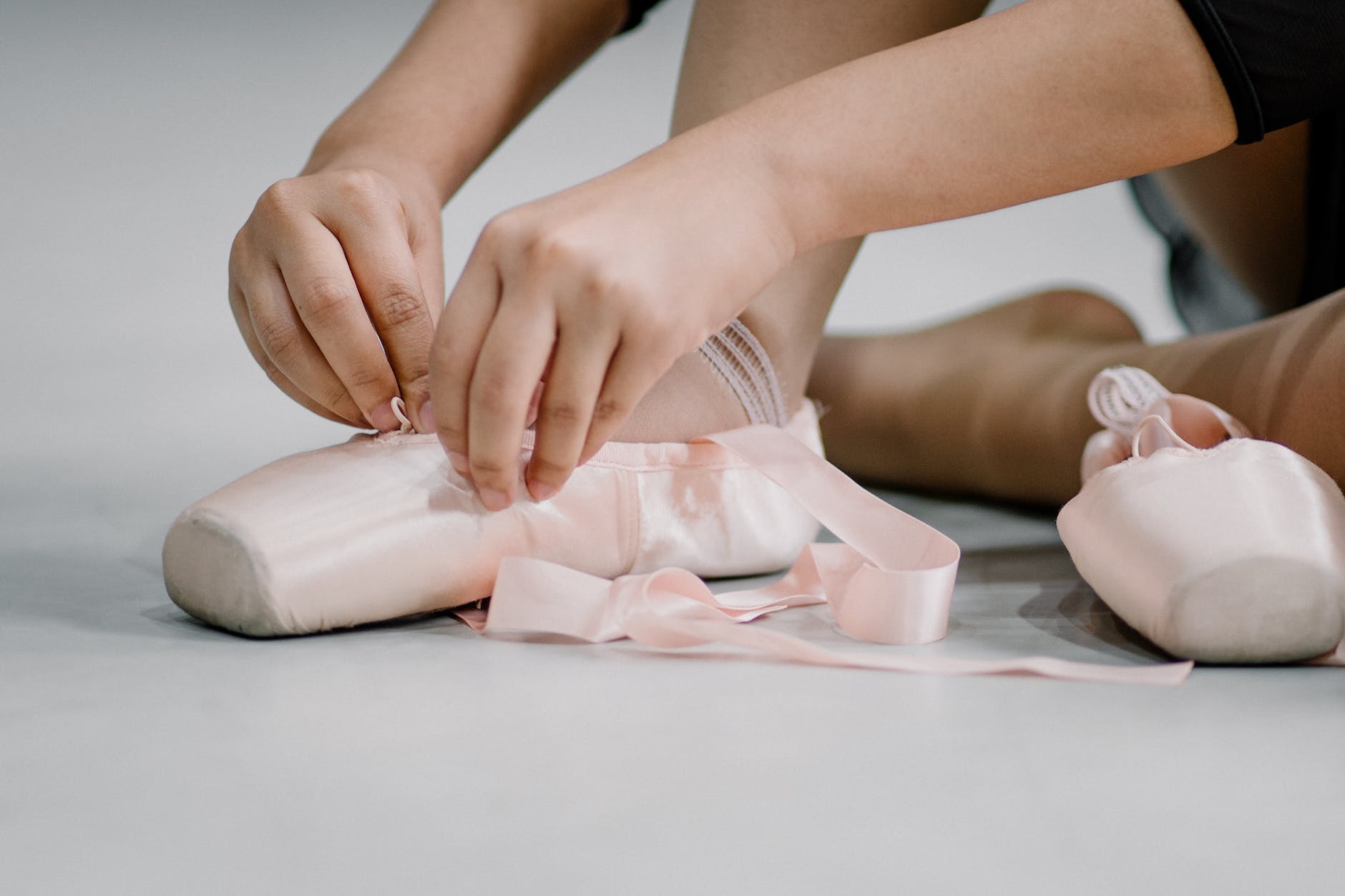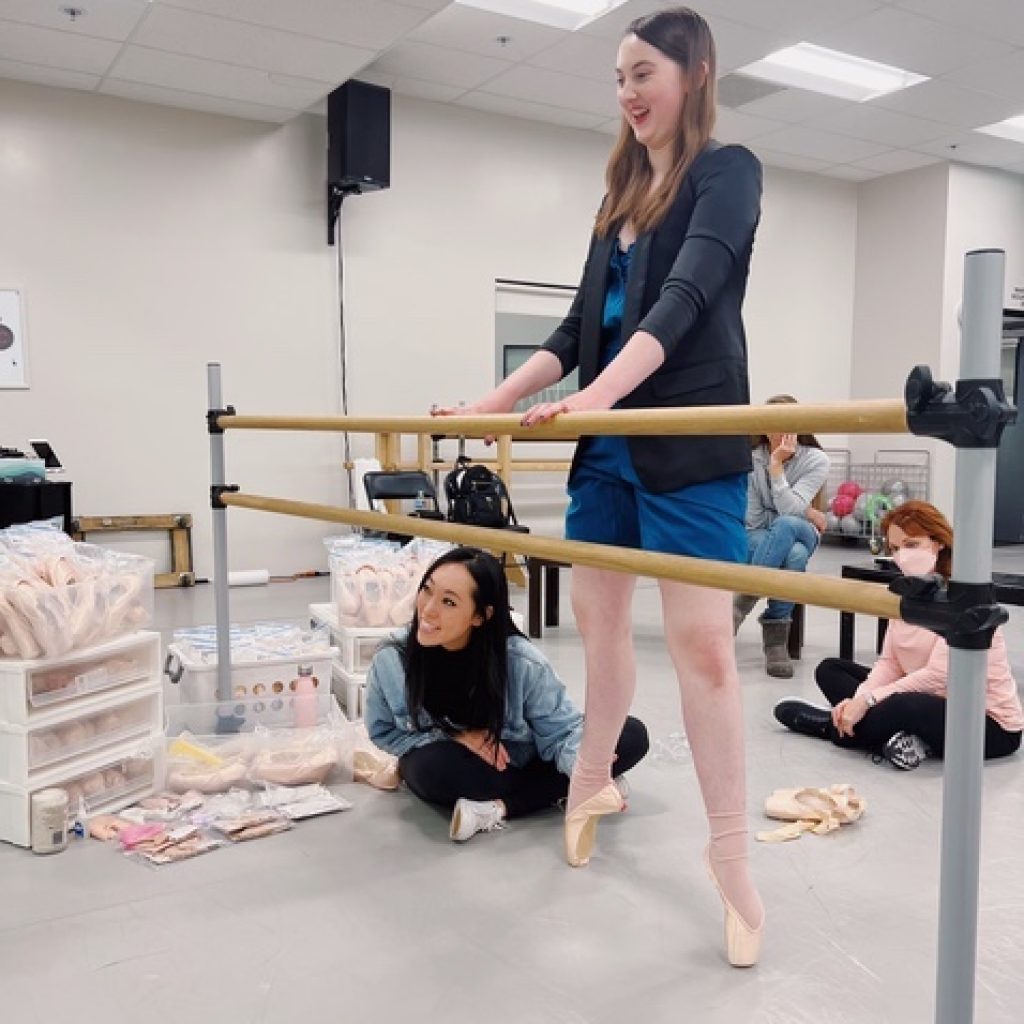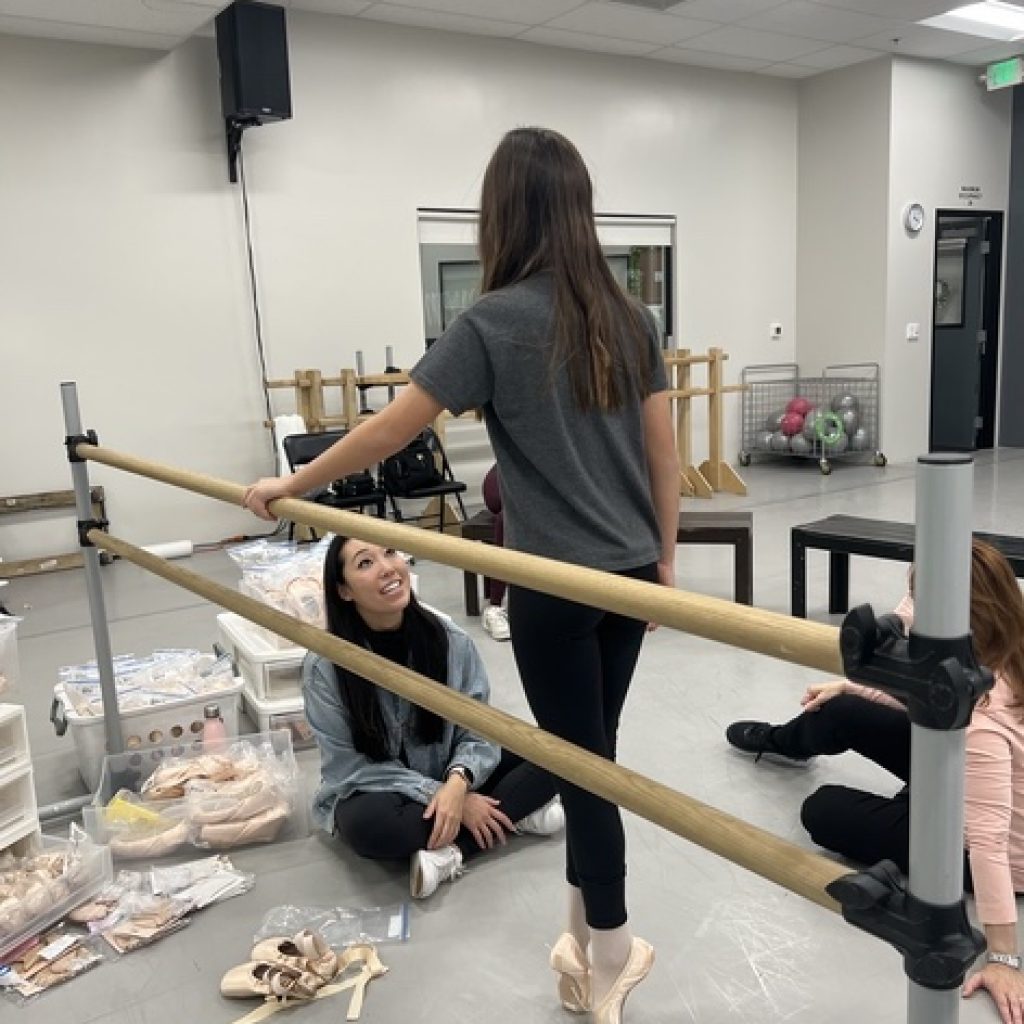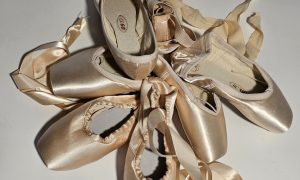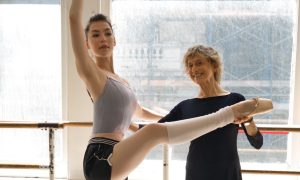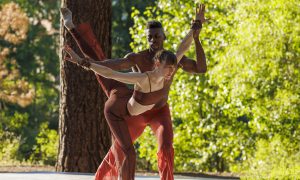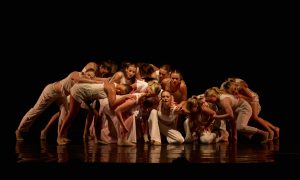Pointe shoe shopping has always reminded me of Harry Potter shopping for his first wand. There’s a big wall filled with long boxes stacked to the ceiling, and a fitter with some mystic knowledge flutters to and fro, pulling this one and that one, hunting for the perfect pair that will suit you just so.
Today, we’re demystifying what makes the perfect pair of pointe shoes perfect for you, and everything you can do to prepare your feet for pointe work before you even step into the store. Afterall, the wand chooses the wizard, right? The more exercises you do to prep your feet for pointe, the better use you’ll make of (and the more satisfied you’ll be with) the pointe shoes you get. Your shoe will work with you to accent your strengths, instead of fighting against your weaknesses.
Josephine Lee is that fitter who helps shoes choose their dancer, through her California company The Pointe Shop – the “Ollivander’s of pointe shoes”, as she refers to it. Lee brings the shoes to you, and fits you with your musculature, structure and development in mind. You may have also seen her on TikTok @josephineylee or @thepointeshopofficial, giving fitting advice, reacting to ballet videos and making other dance-related content. We chatted with her about what dancers can do to prepare before even getting fitted.
A lot of your job involves teaching new pointe dancers how to work well in their shoes – getting all the way over the box, pulling up, aligning weight over the second and third toes, etc. On top of correcting their technique, you help them find shoes that also correct weaknesses. It’s not always about sitting comfortably in the shoe, but finding what shoe will get the dancer to engage correctly. So what are some common ways that a pointe dancer’s foot might sit wrong in their first shoe, and why?
Lee: “The wrong fit can look a lot like bad technique, and add to it. The wrong shape, size or strength can contribute to twisting, sickling and being pulled back in the shoe. Long-term misalignment can build up to eventually cause injuries.
The biggest mistake is thinking that pointe work just requires foot and ankle stability instead of the entire body. I see a lot of weaknesses overall in ballet dancers, and the workload that dancers have now is so much more difficult than 10, 15 years ago. Dancers should have a customized personal training program according to where they are weak – and everyone’s different. What might benefit one dancer could be detrimental for someone else.”
That’s not just for pointework, says Lee, that applies to ballet as a whole. But when dancers first start pointe, it’s a great time to work with their teachers to correct any muscle imbalances, because pointe shoes exacerbate those to a dangerous degree.
How can dancers find out what their imbalances are? Obviously it’s best to work with a professional to determine what training regimen you need depending on your specific structure. But as for some common weaknesses, Lee has some tips.
“One of the things you could look out for (and it’s not always true) is where the dancer is falling. So if the dancer is wearing out the pinky toe side of their shoe more, that means that the lateral part of their lower leg is weaker than the medial. Falling backward could have to do with strength in the core. Of course, it’s more intricate than that; there are so many moving pieces that need to coordinate to do pointe work, but where you fall, which direction, can show you what you need to work.”
One concept Lee drives home is intrinsic vs. extrinsic muscles, and the roles of each. Ready for a deep dive?
“Intrinsic muscles in your lower extremities are mostly the muscles that are in your foot. Extrinsic muscles are the bigger muscles on the lower part of the leg, like your calves and your tibialis anterior.”
You need both for pointe work, but Lee says the intrinsics often get left behind.
“The intrinsic muscles can be strengthened by doing smaller foot exercises. These include doming, or doing ‘piano toes’ (lifting your toes and lowering them one at a time, lifting only your three middle toes, etc.) Anything to work your foot muscles, giving you the stability and the base to do pointework.
Intrinsic exercises don’t look like you’re doing much, because there’s not a lot of movement, but they do so much for the dancer. If the shoes are doing more work than the dancer, the intrinsic muscles get weaker.”
To get full articulation in a shoe that’s made up of glue and hard burlap that inherently inhibits your range of motion, intrinsic exercises are a must. So let’s run through a list of common pointe exercises and see which set of muscles they’re working.
If a dancer has issues with sickling, they might use a theraband wrapped around the outside of the foot and pull inward while winging their foot outward to work their tibialis – Intrinsic or extrinsic?
“Extrinsic.”
Scrunching a cloth under the toes by engaging the arch? Intrinsicor extrinsic?
“Intrinsic, but the ‘scrunching’ of the toes usually gives the dancers the wrong cue. We don’t encourage any exercises that grip – anything that has to do with picking up marbles with your toes, scrunching the towel – it teaches the dancers to grip the achilles instead of using the arch muscles. We work on doming the arch instead.”
Theraband around the balls of your feet, starting with a flexed foot and pointing all the way down through alignment. Does it begin extrinsic as you extend the ankle, and then move into intrinsic as you start to work the toes?
“Exactly. That works both sets of muscles, although the extrinsic more than the intrinsic. But again, when a lot of dancers do that exercise, they will scrunch their toes right at the end, gripping their achilles, which is the opposite of what we want.”
Pointe shoes make apparent any muscle weaknesses, which can make them a good tool to show you where you need to work. But before you even put on the pointe shoes, there’s a lot of strengthening and stretching that can be done. Would you say you’re an advocate for starting your pointe training before you ever put on the shoes?
“Oh absolutely. That’s why pre-pointe classes are becoming more prominent in the United States. It makes such a difference in strength (both intrinsic and extrinsic) when dancers have been through pre-pointe work previously to putting on the shoes.”
Let’s talk about some of the wrong ways to go about preparing for pointe work. What’s your opinion on foot stretcher devices?
“Any kind of static stretch is going to weaken the muscle. And one thing ballet dancers don’t focus enough on already is strength training. Stretching is okay so long as it’s active, and there’s a strengthening process that goes along with it. Dancers tend to have higher pain tolerances, which means young dancers aren’t always aware when they’re actually slowly injuring themselves, or stretching ligaments instead of muscles.”
Pointe work is really physically demanding, and has a high potential for injury if you don’t approach it the right way. That’s why it’s so vital to plan dancer-specific training programs with your teachers, physical trainers and with professional fitters like Lee, to counteract any imbalances or weaknesses before strapping on the stilt boots. But if you take that pre-pointe work seriously, the strength, balance and articulation that pointe work instills will upgrade your dancing all around.
If you’re interested in bringing Josephine Lee and The Pointe Shop to your studio for a group fitting, check out their website.
By Holly LaRoche of Dance Informa.


